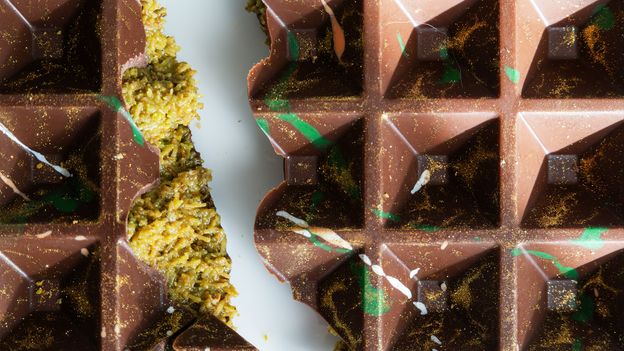- Arvind's Newsletter
- Posts
- Arvind's Newsletter
Arvind's Newsletter
Issue No. #1110
1.UK and India strike trade deal after three years of talks
Britain and India on Tuesday agreed a “landmark” free trade agreement, which London claimed would boost the British economy by £4.8bn in the long run, with big cuts to Indian tariffs on UK exports of whisky and cars reported the Financial Times.
While the full details of the agreements are awaited, the finalisation of the FTA comes at a time when discussions for an early tranche of a trade deal between India and the United States (US) are also gaining momentum.
Total trade between the two countries stood at $21.33 billion during FY25 reported the Business Standard. Exports from India stood at $12.9 billion, up 13.3 per cent year-on-year. Imports from the UK stood at $8.4 billion, down 6.1 per cent year-on-year.
Whisky and gin tariffs will be halved from 150 per cent to 75 per cent before falling to 40 per cent by the tenth year of the deal. Car tariffs will fall from more than 100 per cent to 10 per cent, subject to a quota. The UK government said cuts in tariffs on Indian products would help provide British shoppers with “cheaper prices and more choice” in areas including clothes, footwear and food products such as prawns, reported the Financial Times.
UK government officials have said the deal will make it as simple as possible for Indian companies to move professional employees to the UK under short-term transfers. Indian employees will not have to pay national insurance contributions while on short-term inter-company transfers to the UK, but will still be subject to the same salary thresholds and have to pay the NHS surcharge for immigrant workers.
2.Zara taught Zudio how to outdo Zara: The Ken
Zudio is on a tear.
It sells 90 T-shirts a minute. It opens a new store every 48 hours. It just crossed $1 billion in annual sales. This is fast fashion on steroids: new “drops” every Friday, real-time trend tracking, and ruthless supply-chain efficiency.
Sound familiar? It should. Because Zudio didn’t invent this game. Zara did.
Flashback to 2010: Zara lands in India via a joint venture with Tata’s Trent. Inditex brings the brand, the design, the Euro fashion flair, and billionaire Amancio Ortega’s fairy dust. Trent handles the nuts and bolts—leases, licences, logistics.
Fast forward 15 years. Trent is still in that JV, but it’s also running Zudio, a brand that looks a lot like Zara, moves faster than Zara, and is growing exponentially.
Zudio is Zara, but it works like it knows what country it’s in. Price tags under Rs 999. Local manufacturing. Raw-material hedging. 400+ stores in places where global brands’ GPS just give up.
Meanwhile, Zara? It has 23 stores. Still parked in bougie malls, still selling Rs 4,990 tops. No wonder, its five-storey flagship just shut down, in Mumbai, no less.
Aakriti’s piece in The Ken: An autopsy of how Zara inadvertently let Zudion become its assassin is worth reading. No tech disruption. No marketing theatrics. It’s a story of how Zudio simply watched. Learned. Localised. And scaled.
3.Ambani’s 12-Cent Cola Erodes Coke, Pepsi Dominance in India? Bloomberg
Reliance Industries Ltd. is challenging Coca-Cola and PepsiCo's dominance in India with its Campa Cola brand, which has achieved double-digit market share in key regions barely two years after its relaunch.
Campa Cola's low price point of 10 rupees (12 cents) for a 200-milliliter bottle is disrupting the market, forcing rivals to cut prices, introduce new variants, and shore up their retail networks.
Despite low disposable income in India, Campa Cola's growth is expected to continue, with Reliance boosting capacity by opening a new bottling plant and expanding into new markets, including the United Arab Emirates.
Reliance’s retail unit, helmed by the billionaire’s daughter, Isha Ambani, acquired Campa Cola — a defunct brand that was hugely popular in 1980s — for 220 million rupees ($2.6 million) in 2022. It offers 200-milliliter (6.7-fluid ounce) bottles for 10 rupees, or 12 cents, which is about half of what market leaders Coca-Cola and Pepsi charge consumers for similar-sized bottles.
4.UPI QR codes fastest-growing payment infrastructure in FY25: Business Standard
UPI QR codes have seen remarkable growth in the last few years compared to other payments infrastructure including credit cards and debit cards, latest data by RBI showed.
In FY25, the number of UPI QR codes saw 91.5 per cent year-on-year (Y-o-Y) growth to 657.9 million, while growth in credit card slowed down to 7.94 per cent Y-o-Y. On the other hand, debit card additions grew by a meagre 2.7 per cent YoY to 990.8 million and Bharat QR codes saw 7.48 per cent YoY growth to 6.72 million.
Increased adoption of UPI for real time payments has been the contributing factor for the surge in UPI QR codes in the country and it is expected to rise even further as more people use UPI for their day to day transactions.
5.SBI Likely To Raise Up To Rs 10,000 Crore Via Infra Bonds In June
India's largest lender State Bank of India plans to tap the debt market with infrastructure bond issuance worth up to Rs 10,000 crore in June, two merchant bankers aware of the development told NDTV Profit.
The state-owned bank is looking to issue infrastructure bonds maturing in 15 years. The bank will most likely go for an infrastructure bond issue in June, which would be after the Reserve Bank of India’s Monetary Policy Committee meeting, a person involved in the transaction said, adding they have started the process of the bond issue.
The infrastructure bond issuance is likely to have a base size of Rs 5,000 crore and a greenshoe option of Rs 5,000 crore. The bank is looking to issue these infra bonds in the range of 6.85-6.90%, the person said.
In other bank news, Japan-based Sumitomo Mitsui Banking Corporation is in talks to acquire at least a 24% stake in Yes Bank Ltd., according to people familiar with the matter. SMBC is part of the broader Sumitomo Mitsui Financial Group. The potential deal is likely to involve the State Bank of India, which is the largest single shareholder in the Indian private lender, the people told NDTV Profit.
6.OpenAI has walked back part of its effort to create a more conventional for-profit company, but its restructuring plans still haven’t received the blessing of Microsoft.
The tech company, which has invested $13.75 billion in the startup, remains the biggest holdout among investors as the ChatGPT maker tries to restructure, according to several people familiar with the matter. The software giant wants to make sure that any changes to OpenAI’s structure adequately protect Microsoft’s investment, they said.
7.Plunging oil prices are putting pressure on Saudi Arabia, which remains highly dependent on fossil fuel sales, despite efforts to diversify.
The Gulf’s biggest economy saw its budget deficit nearly quadruple year-on-year in the first quarter thanks to oil prices hovering near four-year lows, and while the kingdom is expected to ramp up production as part of wider OPEC+ efforts to expand supply, “the risks… to our macro forecasts are skewed to the downside,”
Goldman Sachs economists warned. Though non-oil sectors contributed 51% of Saudi GDP last year, the country is still reliant on fossil fuels: As a result, the IMF recently downgraded its forecast for Saudi economic growth and domestic businesses are bracing for a slow down.
8.Autonomous vehicle companies are planning to ramp up their operations in the coming months.
Alphabet-backed Waymo, the US market leader, plans to greatly increase production of its Jaguar robotaxis at its Arizona factory, adding 2,000 vehicles to its current fleet of 1,500 by the end of 2026. Its rivals are dashing to keep up: Uber announced a partnership with the Chinese firm WeRide to bring a robotaxi service to 15 cities worldwide in the next five years, mainly outside the US and China.
Uber has a partnership with Waymo in the US, but works with more than 15 separate autonomous vehicle companies to offer ride-hailing services overseas, TechCrunch reported.
9.Wisdom, Reinterpreted
There’s something extremely odd about wisdom: nearly all of us aspire to have more of it, but few people agree on what it is. Many view wisdom as something beyond pure intelligence, and this is expressed well by an old joke that goes something like:
Intelligence is knowing that Frankenstein was the doctor.
Wisdom is knowing that Frankenstein was the monster.
And also by another quip in the same vein, which goes:
Intelligence is knowing how to get out of sticky situations.
Wisdom is not getting into them in the first place.
If we aspire to be wise it seems like we should know what it is. So, how do we understand the concept of wisdom more deeply?
Psychologists, philosophers, and cognitive scientists have proposed many models for understanding wisdom. This week, we’re going to walk you through some of them so that you can get a better understanding of what it means to you and how you can get more of it.
In this article, we'll discuss 3 definitions of wisdom, including:
Wisdom as pragmatic expertise
Wisdom as self-consistency
Wisdom as a virtue
10.'It was born to be a champion': How Dubai chocolate conquered the world
Invented to satiate pregnancy cravings, Dubai chocolate is a rare combination of creativity, flavours and social media success that has broken all industry records.




.%20(Photo_%20Vijay%20Sartape_%20Source_%20BQ%20Prime).jpg?w=1200&auto=format%2Ccompress&ogImage=true)




